Mud Flat Press asked friends to contribute questions for an interview with MFP author and co-founder Alec Clayton.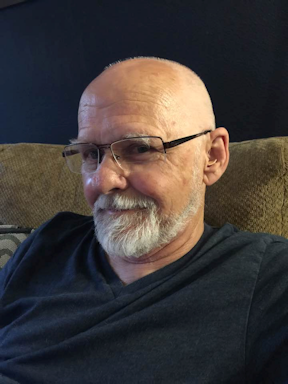
Interviewed by Ricker Winsor (author of Tic Toc, The Painting of My Life, and Pakuwon City), Ned Hayes, (author of The Eagle Tree, Sinful Folk, and Coeur D’Alene Waters, and publisher of OLY ARTS), Christian Carvajal (author of Lightfall), Jack Butler (author of Practicing Zen Without a License and Jujitsu for Christ), and Gabi Clayton (co-founder of Mud Flat Press) .
Ricker Winsor: I expect your incentive to become a writer came from your years as arts editor in Tacoma. Is that right?
Alec Clayton: Nope. Much earlier than that. I took one creative writing class in undergraduate school. I wound up editing a weekly newspaper in New York City from 1974 to 1977. Then my wife, Gabi, and I published, in chronological order, a weekly newspaper, a monthly city magazine and a quarterly arts and literary magazine in Mississippi from 1977 to 1985. I started my first novel while we were in Mississippi—on an IBM Selectric typewriter. I tried writing some short stories but decided they stunk, so I focused on books until recently. I started writing art reviews and other stuff for The Ranger and Choices (which eventually morphed into the Weekly Volcano) in 1995. It was as an art reviewer in the late ’90s that I first met you. By then I had already finished my first novel, Until the Dawn.
RW: Growing up in Mississippi seems to be a particularly deep experience. Why is that?
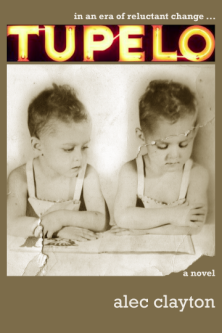 AC: I think there’s a reason Mississippi has produced so many outstanding authors. Living there is like living in . . . well, like living in a William Faulkner novel. There is a rich story telling tradition in the South. Plus, I had an uncle, James Robert Peery, who was a bestselling novelist back in the ’40s and ’50s. He died when I was too young to remember him, but my mother told stories about him, and he was my hero.
AC: I think there’s a reason Mississippi has produced so many outstanding authors. Living there is like living in . . . well, like living in a William Faulkner novel. There is a rich story telling tradition in the South. Plus, I had an uncle, James Robert Peery, who was a bestselling novelist back in the ’40s and ’50s. He died when I was too young to remember him, but my mother told stories about him, and he was my hero.
RW: How do you see your life going forward from this point? What do you want to accomplish now?
AC: At my age, I’m happy for it to go forward at all, but I’d love to see movies made of one or more of my novels.
RW: What keeps you motivated. What keeps you producing when, as we know the world is very busy, complicated, noisy, and has very little time to appreciate us.
 AC: Appreciation is nice. I get it from family and friends, but seeking kudos is no reason for writing and publishing. I do it out of love for the art. I love creating characters, putting them in life-like situations, and seeing what they do. I also love editing, re-writing, my own stuff and that of other writers. I like to see the MFP authors succeed.
AC: Appreciation is nice. I get it from family and friends, but seeking kudos is no reason for writing and publishing. I do it out of love for the art. I love creating characters, putting them in life-like situations, and seeing what they do. I also love editing, re-writing, my own stuff and that of other writers. I like to see the MFP authors succeed.
Ned Hayes : How has American publishing and American literature in general, changed over the last 40 years of your life?
AC: Forty years ago there were fewer publishers, and print-on-demand was not even dreamed of. The big publishers used their best-sellers and sure-bets to finance finer literature they pretty much knew would never make big bucks. Now it seems they’re in it just for the money. But with print-on-demand, anybody can publish their own books with very little cost. This, of course, opens the doors for a lot of trash, but it also provides opportunities for a lot of great writers to be published who otherwise would not be able to get their work out.
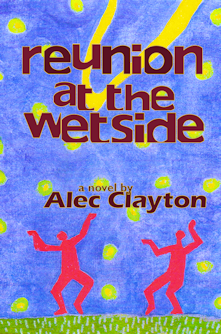
NH: You’ve seen several political pendulum swings during your lifetime. Do you see one coming in the future?
AC: Simply put, yes. Maybe that’s wishful thinking, but I sure hope so. Right now we in America are at the far right wing of a swing that is scarier than any since Nazi Germany. As a result, we are nearer the possibility of environmental destruction and nuclear war than ever in history, either of which could make a swing back impossible.
Christian Carvajal : What was the strangest question you ever got asked at a reading, and what was your answer?
AC: I wish I had an answer worthy of the question, but it seems the people who come to my readings are fairly sane and reasonable. There was one comment from a reader I heard second hand. It came from someone who lived in Tupelo, the setting for two of my novels, to someone else who reported back to me. He said, “Who the hell are all these people? I don’t know any of these people.” It seems he didn’t get the notion of fiction being a made-up story, and he was pissed off that I wrote about his hometown and he didn’t know any of the people in the book.
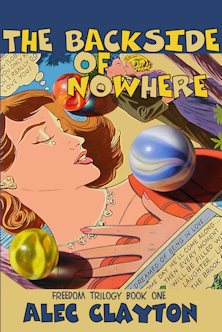 Jack Butler: You’re a painter, and I know the result shows up in your fiction in characters (just one, mostly) or as dialogue or other bits of the narrative. I wonder if you feel there is any other influence, strong but too subtle to show up as any one thing—a way of seeing life, for example—that your painting has on your fictional work.
Jack Butler: You’re a painter, and I know the result shows up in your fiction in characters (just one, mostly) or as dialogue or other bits of the narrative. I wonder if you feel there is any other influence, strong but too subtle to show up as any one thing—a way of seeing life, for example—that your painting has on your fictional work.
AC: My methods of writing and painting are much the same. In painting I work with color and shape. In writing I shape the lives and events of characters. In both I start out with a vague central idea and expand on it, reacting as I go along to what is happening on the page and on the canvas. The book or the painting talks to me, challenges me, and I respond.
Travis Earl “Red Warner,” a character who shows up in four of my novels, is an artist, as is Frances Gerald Gossing
in Visual Liberties and two main characters in Imprudent Zeal. I imagine the success I have had in writing descriptive passages comes from my years of studying and making art.
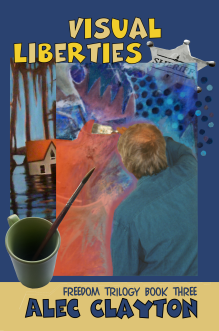
Gabi Clayton: Who are some of your favorite characters?
AC: That’s like asking a parent who his favorite child is. Having said that, I must start with Red Warner, the wild and crazy artist known as the redneck Dean Moriarty of On the Road fame in Until the Dawn. Red keeps showing up, letting me know I’m not done with him yet. I’ve even used his name as a pseudonym for some of my theater reviews.
I also love Frances Gerald Gossing and Bitsey Ashton in Visual Liberties. Frances is a lovable youth who might be on the autism scale, perhaps a savant. Bitsey, the old hippie and alcoholic wife and mother, first showed up in The Backside of Nowhere and really came alive in Liberties. And of course I have to include Earl Ray “Pop” Lawrence, the bootlegger and patriarch of Freedom, Mississippi in Backside.
GC: What is your writing routine?
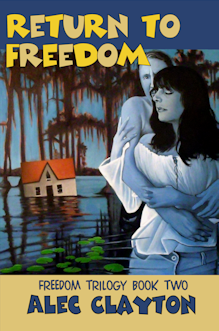 AC: I could very well be the most undisciplined writer in the world. I have no routine, no schedule. Since my “day job” is writing art and theater reviews, all of which have to be completed on a deadline, my short story and novel writing is squeezed in between them. Sometimes I might work for hours on a novel, and go back and forth on various writing projects even within a single day. Other times I might set it aside for days or even weeks while working on other things.
AC: I could very well be the most undisciplined writer in the world. I have no routine, no schedule. Since my “day job” is writing art and theater reviews, all of which have to be completed on a deadline, my short story and novel writing is squeezed in between them. Sometimes I might work for hours on a novel, and go back and forth on various writing projects even within a single day. Other times I might set it aside for days or even weeks while working on other things.
I don’t use an outline, but I do make lists of characters and settings that I constantly update and check so that the character who was driving a Buick convertible in chapter one, for instance, is not driving a Ford sedan on the same day in chapter six. I will often imagine a scene or a conversation and go ahead and write it not knowing if, how, or when it will eventually find its way into the novel. For example, I started my first novel, Until the Dawn with a chapter about Red Warner fishing on the Mary Walker Bayou. On a whim, I decided to say he had a missing finger. Then I realized that I would need to account for why that finger was missing, and that became a major plot point in the novel. And by-the-way, the fishing scene was the opening scene in the first draft, but it didn’t show up until the last chapter of the final novel. As Shakespeare said, “Though this be madness yet there is method in it.”
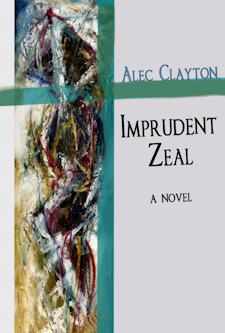 GC: What other writers are you reading now?
GC: What other writers are you reading now?
AC: I recently finished reading Kindred by Octavia Butler. Before that I re-read The Rabbit Factory by Larry Brown, a great Southern writer who died way too young. At the moment I’m diving into The Weight of Ink by Rachel Kadish. It was a Christmas present. It’s a heavy and dense historic novel that reminds me a lot of Wallace Stegner’s Angle of Repose in that it is about an elderly academician working with an upstart young assistant to dig up ancient stories. Stegner’s story was of an old man researching his own past with the help, and often hindrance of, his young housekeeper. And for fun I’m reading Strangers in Their Own Land: Anger and Mourning on the American Right by Arlie Russell Hochschild.
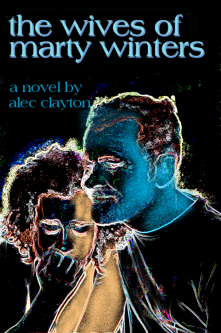 GC: I know a lot of people think your novels are autobiographical? How much of it is your life and how much fiction?
GC: I know a lot of people think your novels are autobiographical? How much of it is your life and how much fiction?
AC: I draw on events from my own life and from people I have known as a starting point upon which I build fictions. Memory and imagination become so intricately interwoven in the process of writing that I sometimes reach a point where I hardly know myself what’s real and what isn’t. There’s a little of me in most of my characters—black, white, male, female, evil and heroic. And bits and pieces of my relatives and friends, and especially my old high school classmates, can be found in all my characters. There is a lot of me, for instance, in Kevin Lumpkin in Tupelo. Jim in Reunion at the Wetside is based on an old high school buddy and on a drag performer in Olympia, neither of whom have anything in common with each other; Frances in Visual Liberties is a totally made up character.
GC: What are you working on now?
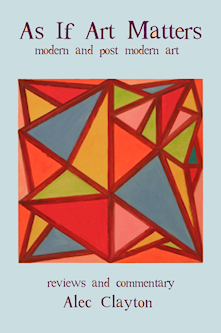
AC: I’m trying to build a novel based on my short story, “Hitching to NYC,” which I told at Story Oly and later published in Creative Colloquy. I’ve updated it from the 1970s to 2015, moved the starting point from my old hometown in Mississippi to New Orleans, and added a new character—a college English major who works weekends as a burlesque dancer. She and her boyfriend, a wannabe actor, break up. He hitch-hikes to New York with dreams of becoming a star on Broadway, and she runs away to Texas with a rich cowboy. This one started out 90 percent autobiographical and is fast becoming 90 percent fiction.
![]()

Thanks for important insight into your writing process and values. Ricker
You’re welcome, Ricker. I hope I was able to answer your questions satisfactorily. Alec